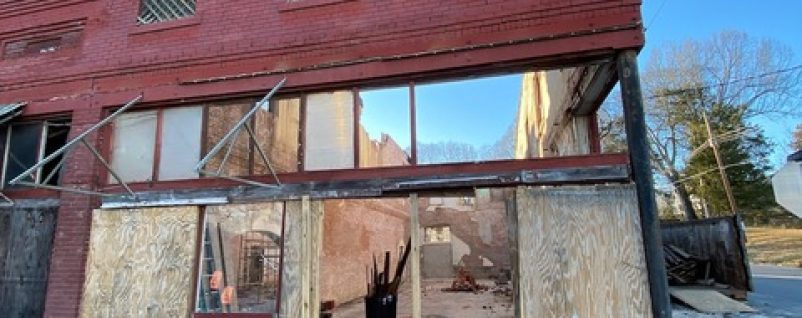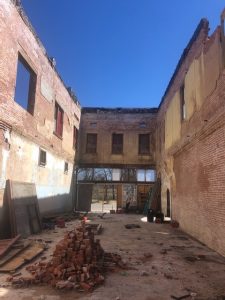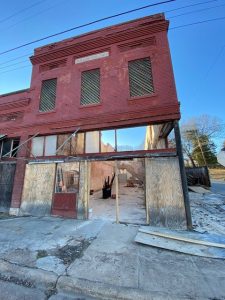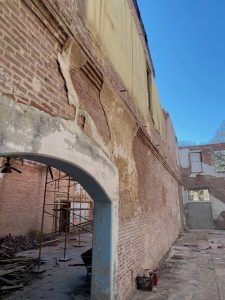

| Endangered List: Back To Main Page |
| City/County/Congressional District: , Prairie County (District 1 ) |
| Location Class: • Commercial |
| Year Built: • 1913 |
| Historic Designation: • Historic District |
| Status: |



Constructed in 1913, the two-story Robinson Building anchors the last intact commercial block in the White River town of DeValls Bluff. The building housed the Robinson Mercantile on the first floor and a Masonic Lodge on the second floor. The building’s namesake, E. B. Robinson, opened the Robinson Mercantile here in 1924. In 1929, Mr. Robinson was in poor health and turned all of his business affairs over to his wife, Hester Buck Robinson. Hester Robinson was an astute businesswoman, who not only operated the store, but acquired large amounts of farmland in her own name in Prairie, Monroe, St. Francis, and Woodruff counties. She served on the board of directors at several local banks, was vice-president of the DeValls Bluff School Board, and vice-president of the Biscoe Gin Company. At the time of her death in 1963, she was one of the largest landowners in Prairie County with more than 15,000 acres and an estate worth $1.2 million.
Fast forward to 2020. The Robinson Building had long been vacant and deteriorating. Exterior bricks were starting to fall, and the building was at risk of demolition. The nonprofit Studio DRIFT, which stands for Developing Rural Infrastructure for Tomorrow, purchased the Robinson Building and two adjacent buildings. Studio DRIFT removed the Robinson Building’s severely damaged roof and interior elements, salvaging materials for use in the building’s rehabilitation where appropriate. The brick was repointed and the exterior walls stabilized, but the building remains a shell. Additional resources are needed to reconstruct the building’s roof and interior for use as a multipurpose space that benefits the community. Studio DRIFT’s long-range plan is to rehabilitate the entire block, creating a focal point and tourist attraction that can serve a practical need for people looking to ride bike or water trails, explore local cuisine, culture, and history, and then ultimately become an economic catalyst for the whole region and spark future businesses and preservation efforts.
Preserve Arkansas is committed to making its Web site accessible to all users and welcomes comments or suggestions on access improvements. Please send comments or suggestions on accessibility to info@preservearkansas.org.
